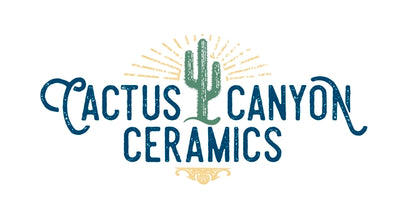If one looks close at ceramic pieces, you can spot tell tale signs left by artisan’s hands. The hand crafting process leaves small differences, and the hand painting and glazing process leaves signs and small imperfections.
First, it is important to know that Spanish artisans use certain tools and implements when they are producing pottery. Painters use a painting wheel, different sizes of brushes and a pera (or soft rubber palm bulb applicator). The application of colors is different. Some colors are absorbed by the bisque and require more coats to produce a full colored finish (and not faded). Since each color is different, and each painter doing it by hand, there will be small variations in tones of the solid colors.
I was on a business tour with a young chap from the US. This young fellow was responsible for sourcing for a company, and was doing most of his sourcing in Mexico. The company had decided to send him to Spain, mostly because his trip and lodgings were paid for by the Spanish government. After visiting about 4 factories and talking with many people, I asked him if he was finding things of interest. He commented that it was all interesting but he didn’t like that the colors were not solid and that there were imperfections. I tried not to appear incredulous with his comment, but inside my head I was thinking, “…. Duh! this guy is an idiot. What have we been seeing for the last day and a half? We watched many painters working and talked extensively about the application of colors and designs. Humans are not machines. Each bowl, even if painted by the same painter will be different,… and this is what he doesn’t like about it???? Better for him to go to China and visit a large mechanized factory where he can get his solid colored bowls painted by machines.”
This was the same guy that earlier in the morning had told me a fabulous tale about how he had spent the night at the Cordoba Fair, and had danced, drank and chatted up many beautiful señoritas. I might have actually believed him, but he was a quiet lad, a little heavy on his feet and the story he told didn’t fit. I don’t care if he was 20 something, a night like what he described would leave some traces and he was too bright eyed and bushy tailed. I came to the conclusion that he was a young guy a little bit over his head, or not quite comfortable with himself, and he wanted some stories for his home office. Adventures are available in Spain, they don’t need to be made up.
But still, I really could not believe his comment about the ceramics. He was the wrong guy to send to Spain to look at sourcing hand painted pottery. But, I know from personal experience that many US consumers also are turned off by the small imperfections. They do not understand the production process, and so do not appreciate the originality and uniqueness of each piece. Don’t get me wrong, I am not in favor of poor quality finishes. I am just saying that due to the fact that is is hand crafted and hand painted, there will be small imperfections, no way around it.
The whole production process starts with the production of the raw piece, or the bisque or “barro” piece. This can be done in hydraulic presses or by pouring liquefied clay into forms. In both cases, once the raw clay piece is dry, a small knife or piece of glass and a bit of sandpaper are used to smooth the edges. The artisan handling of the clay pieces can sometimes cause very small differences in shape.
Once the bisque is prepared it is then painted. In addition to small variation in the color tones of pieces due to the individual application of color by paint brushes, each of the designs will be slightly different while the main essence is the same.

After painting, each piece is completely dipped into a vat of glaze. You can see the process in the photo of the lady dipping a small pitcher. The dipping is done with a sort of pliers (see the picture of the pliers). The pliers leaves small dots sometimes where the pressure points of the pliers are applied. The third photo shows examples of the small dots left by the pliers.


Another sign you can spot most times is the appearance of a glaze “drip” mark on the side or edge of a piece. This is due to the extraction of the piece from the vat of glaze. Usually the artisan dips the piece and then in a twisting motion removes the piece from the vat with the goal of spreading the last bit smoothly, but almost invariable there is a drop mark where the last of the liquid glazed dripped off of the piece.
Once the the glaze is dried a bit, a bottom area is wiped or wet sanded clean (down to the bisque or terracotta). This is so that when the piece is placed in the kiln to fire, it will not stick or weld to the the kiln shelves or other pieces. There has to be a clean area on the bottom of each piece without glaze. If you look at the bottom of a hand painted and glazed terracotta garden pot for example, you will see that this is true.
This is only a quick overview of several elements of the production of hand crafted and hand painted Spanish pottery. But, I hope I have provided some insight on why there are small imperfections in the Spanish artisans work. Really they are imperfections to be appreciated and treasured!
Thanks for reading. I am always interested in reading your comments and experiences, and I would be glad to field any questions.
Steve
Cactus Canyon Ceramics


